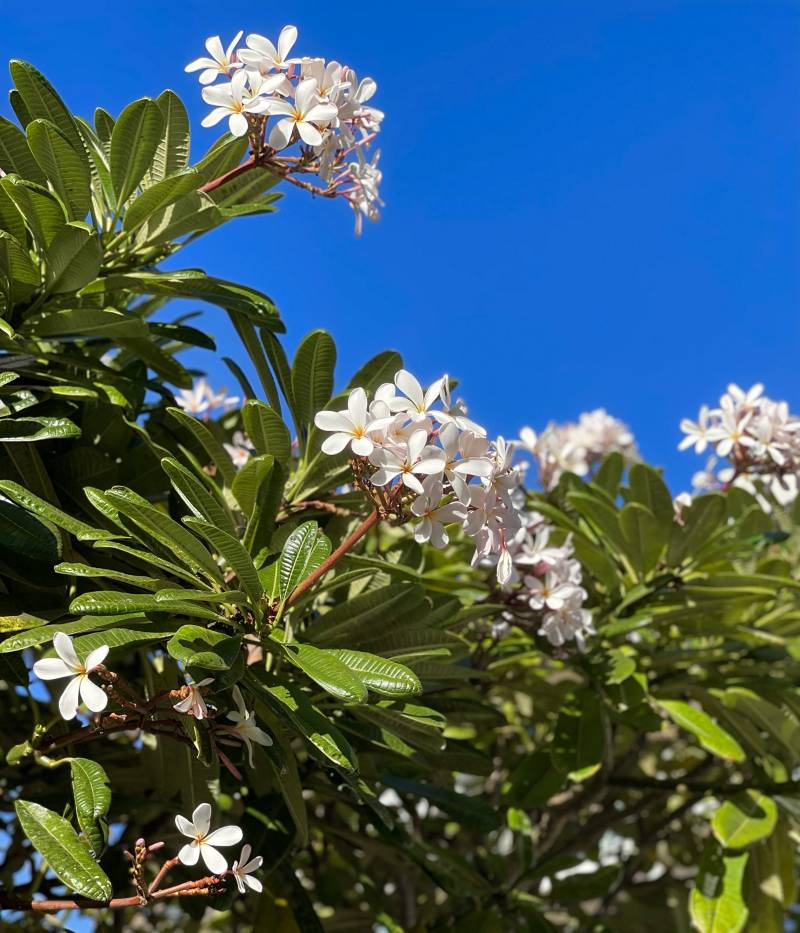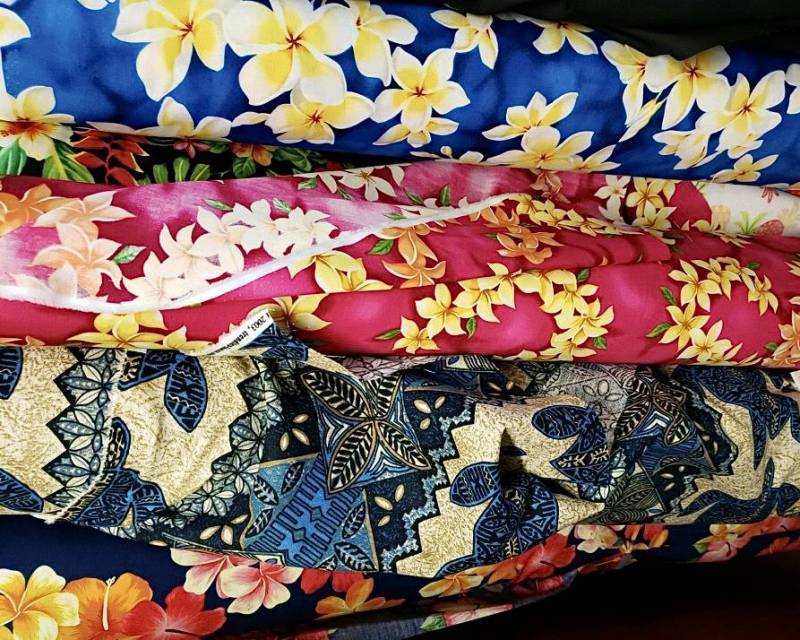If you have traveled to Hawaii or have only seen the culture portrayed in movies and art, you will surely be familiar with the beautiful plumeria flower. You may have seen this delicate miracle placed in the gorgeous hair of a hula dancer, around the necks of those vacationing, or given as a celebratory gift. The flower is exquisite in appearance, ranging from vibrant yellow, pink, orange, and white; a lovely fragrance accompanies the colors. We use these special flowers to reflect positivity and Aloha.

Origination of the Plumeria
Plumeria in Hawaiian is “Melia,” and the scientific name is Frangipani; this flower belongs to the family of Apocynaceae. People tend to believe the plumeria is indigenous to Hawaii, but they are indeed native to Mexico, Central America, Southern India, and Venezuela. Plumeria has spread to all tropical areas of the world, so it’s no shock why they thrive so abundantly in Hawaii’s perfectly warm climate and volcanic soil. Plumeria is related to the Oleander and comes in thousands of varieties; this relation also has a similar caution of the tree containing poisonous milky sap. Different shaped leaves, colors, and growth habits distinguish each separate species. Plumeria tends to grow best in lower elevations, therefor in Maui, you will most often see them on the lower makai side and in the valleys versus Upcountry!

Pollination of the Plumeria
Plumeria flowers are most fragrant at night in order to lure sphinx moths into pollinating them. The flowers have no nectar; therefore, they trick their pollinators by producing an irresistible scent. Without intention, the moths pollinate them by transferring pollen from flower to flower in their fruitless search for nectar.

History and Presence in Hawaii
Plumeria was brought to Hawaii in the 1800s and has since played a considerable role in Hawaii’s rich history & culture. The first plumeria species brought to Hawaii was the plumeria acuminata, which can range in height from 6-30 feet!
Originally plumeria was used to beautify cemeteries which caused Hawaiians to refrain from wearing them due to the association of death and mourning. Today they represent birth, love, and new beginnings! Traditionally, the plumeria can display a woman’s romantic status when worn in the hair. If in a relationship, you place the flower behind the left ear; if you are willing to seek love, you place the flower behind the right ear.

Art and Fashion
The plumeria has been essential in creating delicate masterpieces in Hawaiian Lei Making. Making Lei and Haku/Le Po’o requires an intricate process of combing materials such as Ti leaf, ferns, Kukui nuts, feathers, shells, and fresh flowers to create necklaces and headpieces — in this art form; plumeria tends to be the star. Lei is often given and received at weddings, luaus, graduations, parties, blessings, and more!
Traditionally, men and women in Hawai’i wore pa’u – a skirt made out of loincloth. Today, the fabric to make these decorative garments comprises artistic designs that often contain prints of plumeria. Plumeria-printed fabrics make stunning table clothes, dress shirts, sarongs, and even dog collars; Modernly, this fashion statement is called Aloha Spirit. As the sight of this unique flower is rather eye-catching, plumeria also makes a popular subject for paintings, drawings, woven rugs, and jewelry!

Connecting Ohana
As we have learned why this flower is so dear, I’d like to point out the connection it brings to others. In Hawaii, Ohana is not only referring to blood-related family but also to friendship. The plumeria has connected many of my clients to their new homes, new beginnings, and new Ohana!
I hope you enjoyed reading, please stay tuned for future blogs!




Maryelise
August 16, 2023
What is the Hawaiian name given to pickers at Plumeria Farms? Is the farm known as a “Plumalea” in Hawaiian?